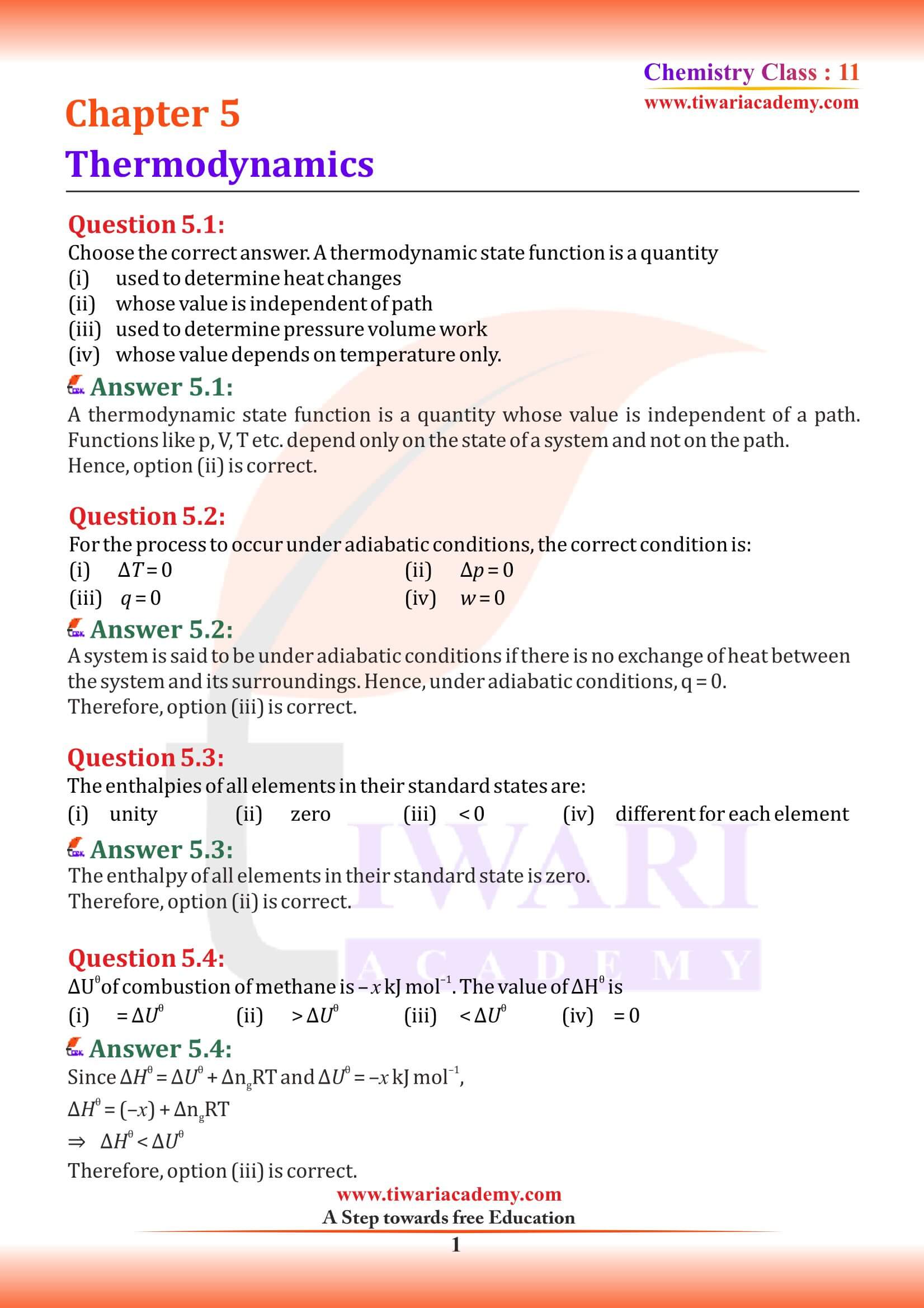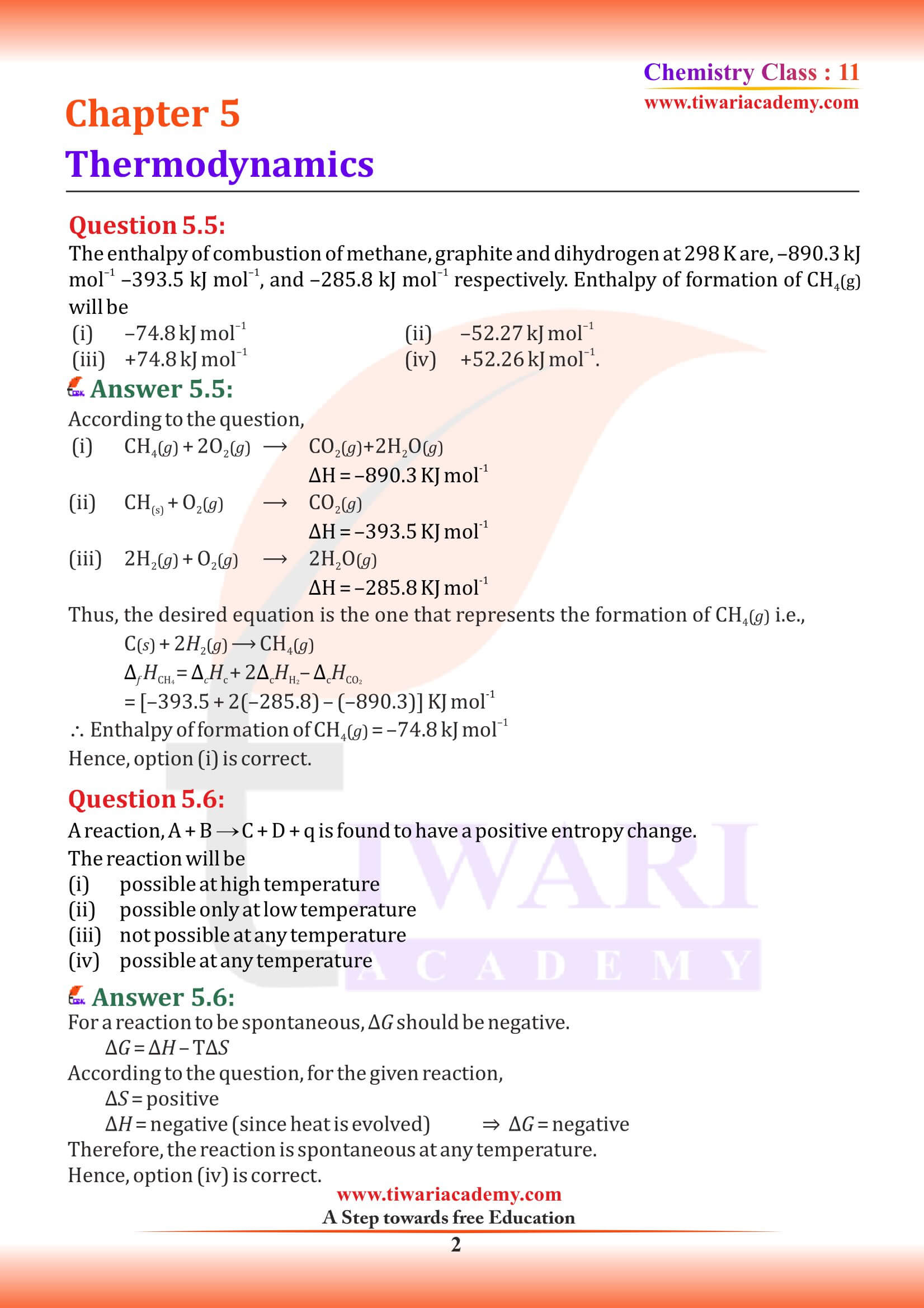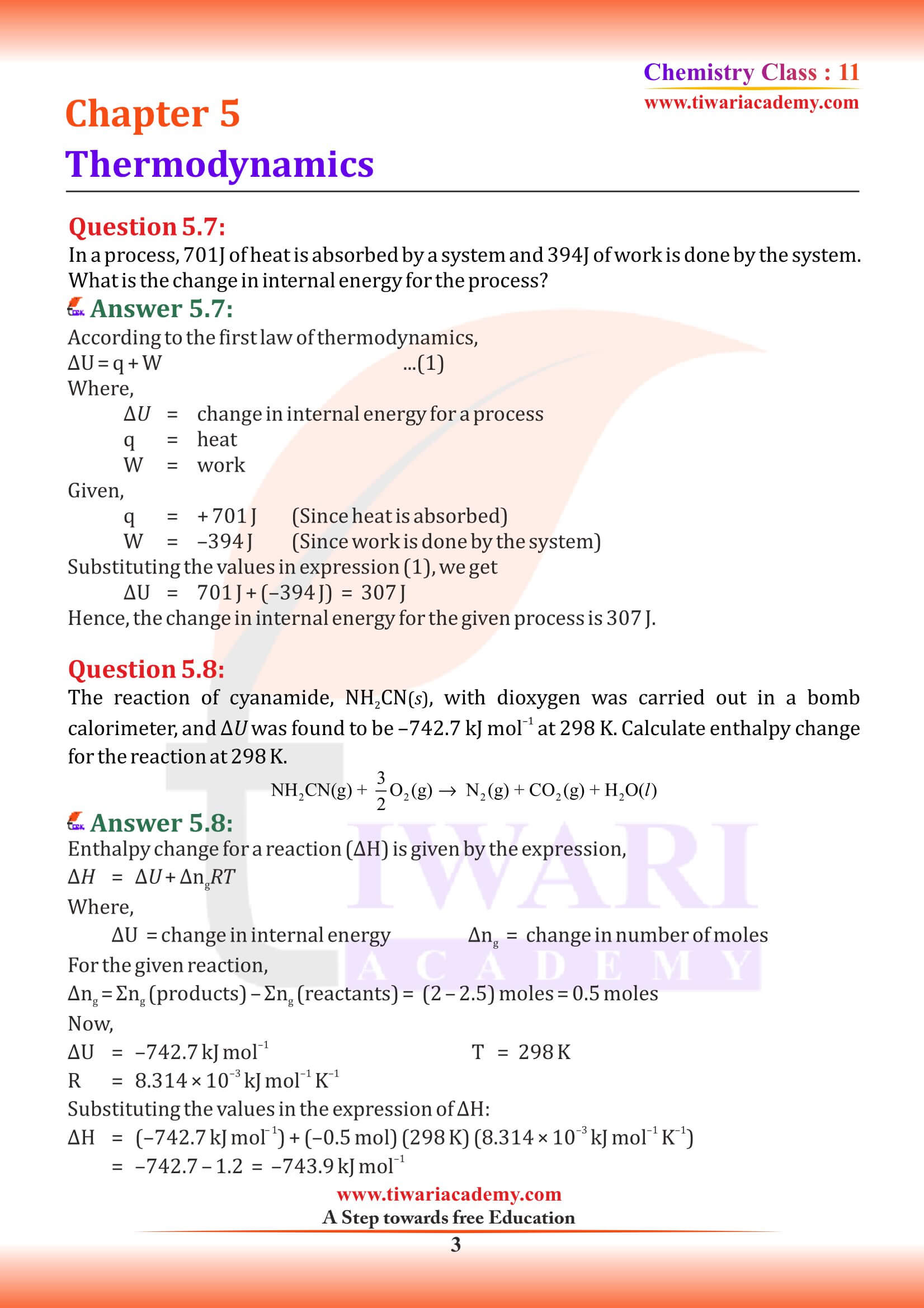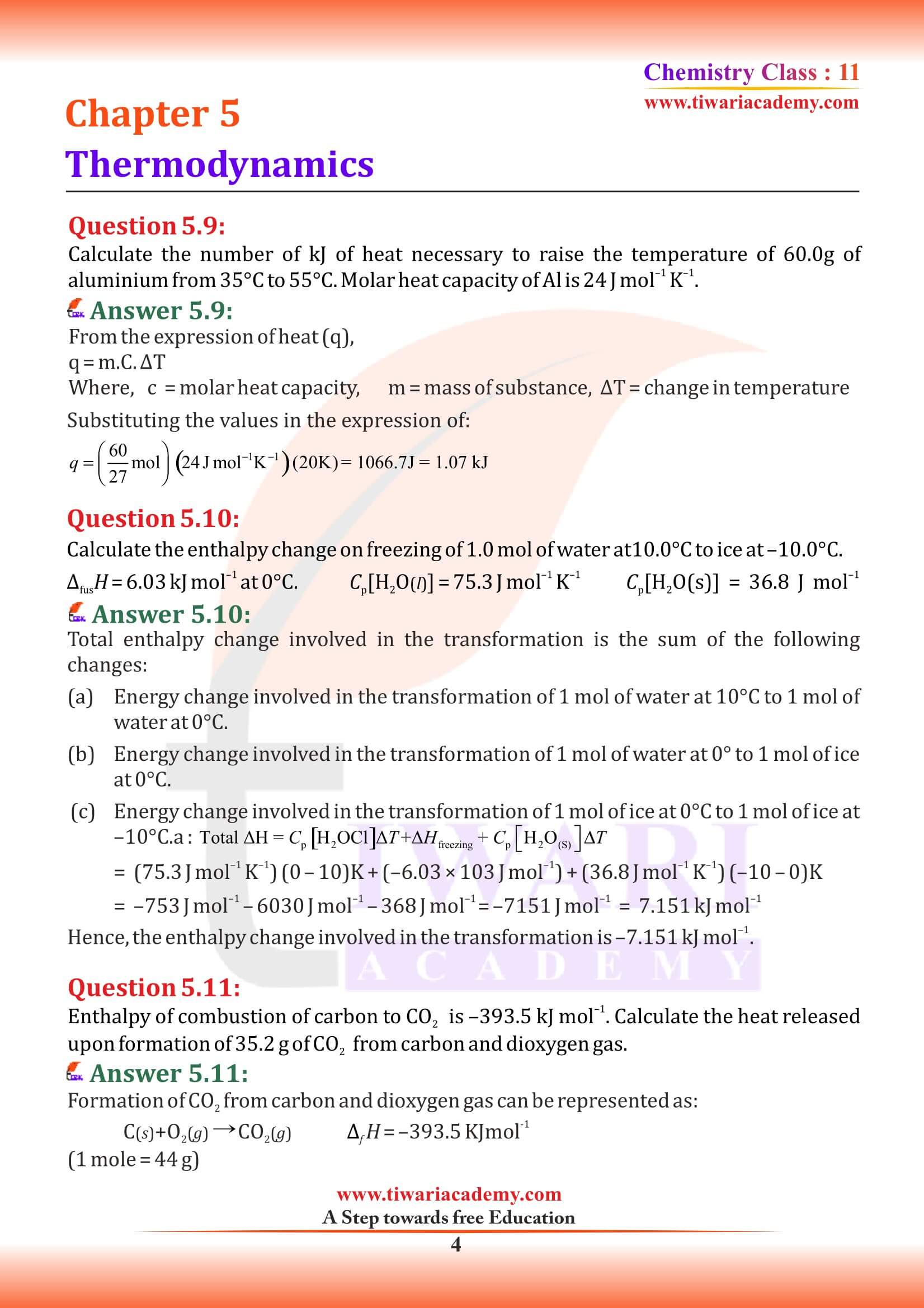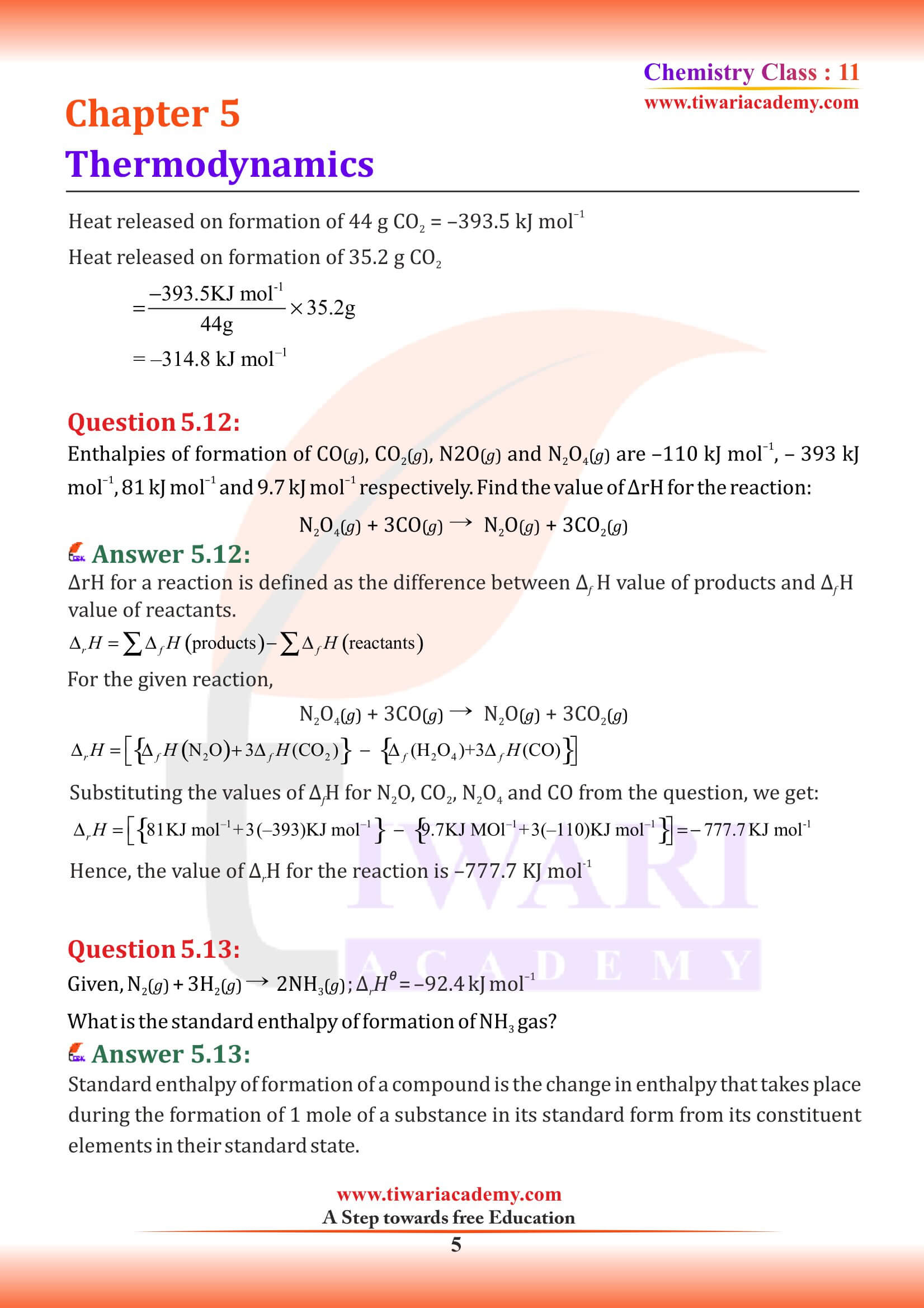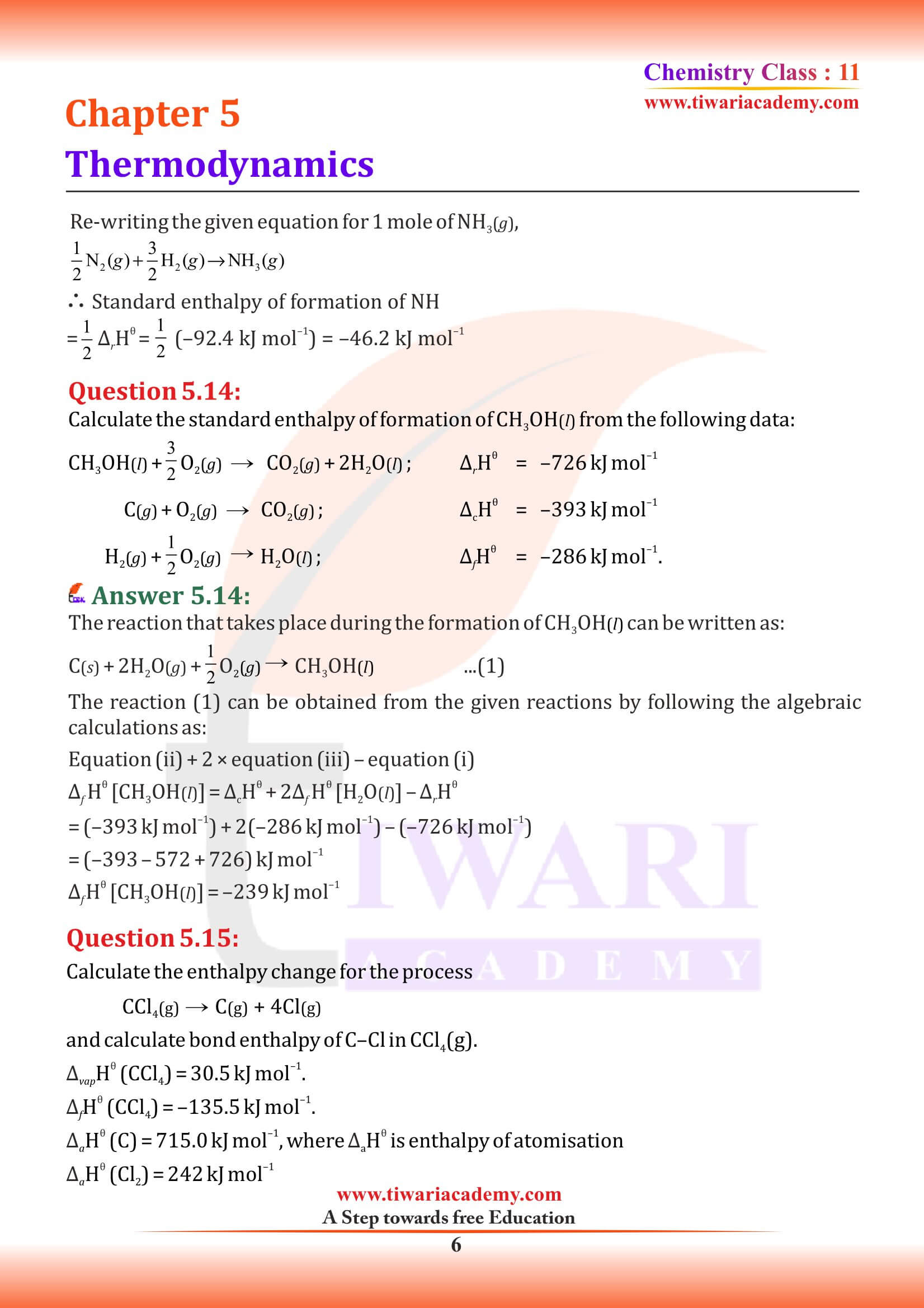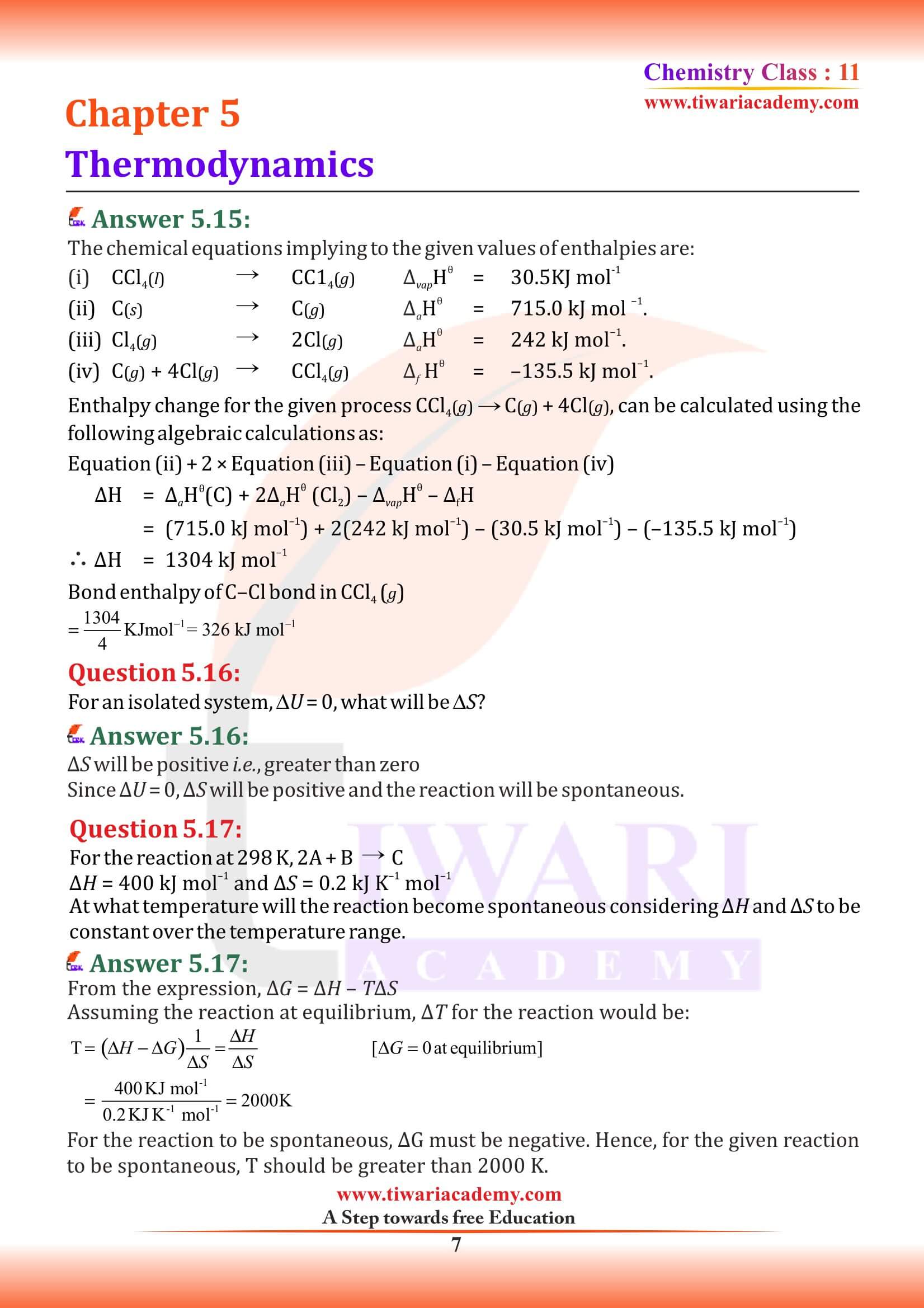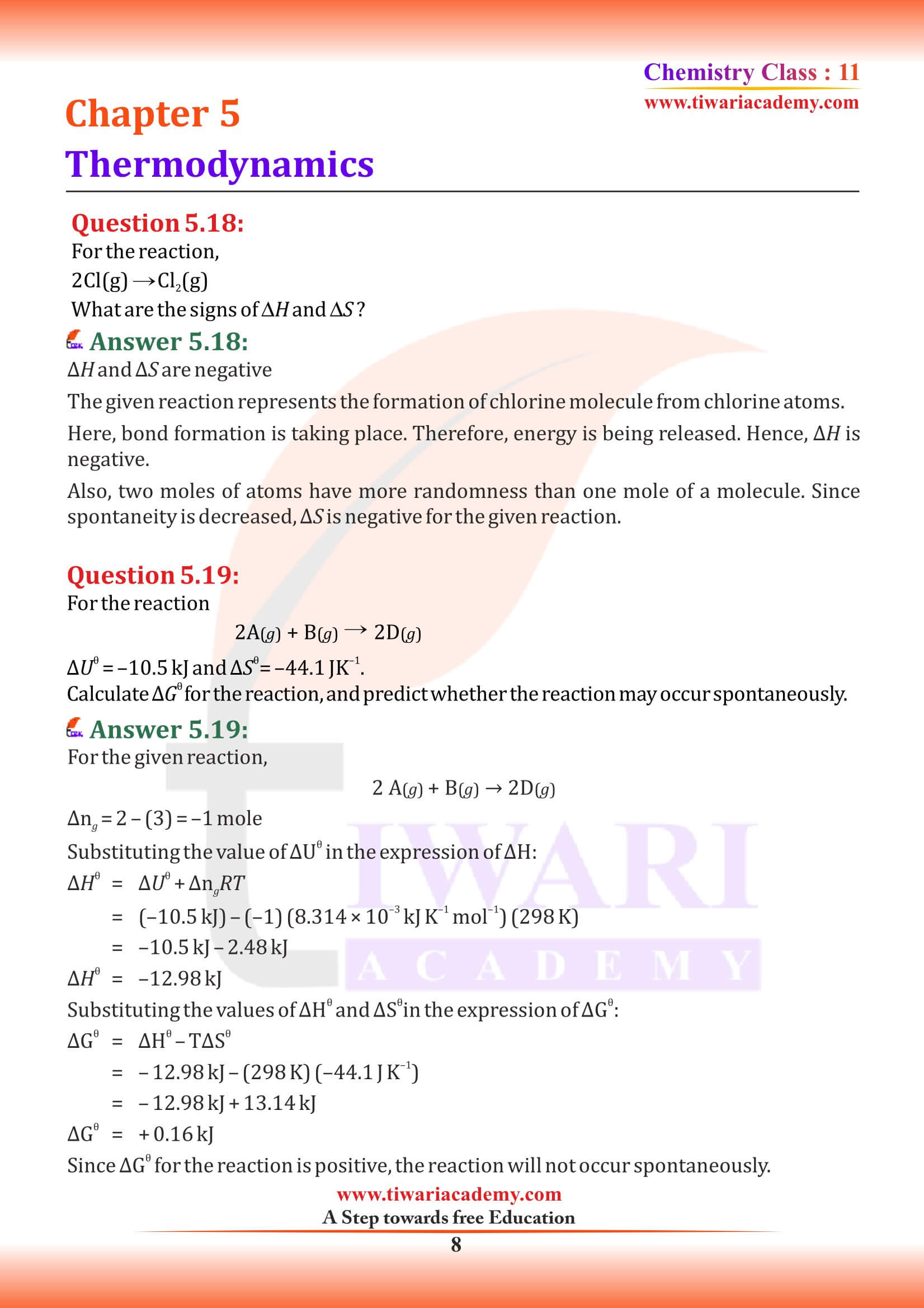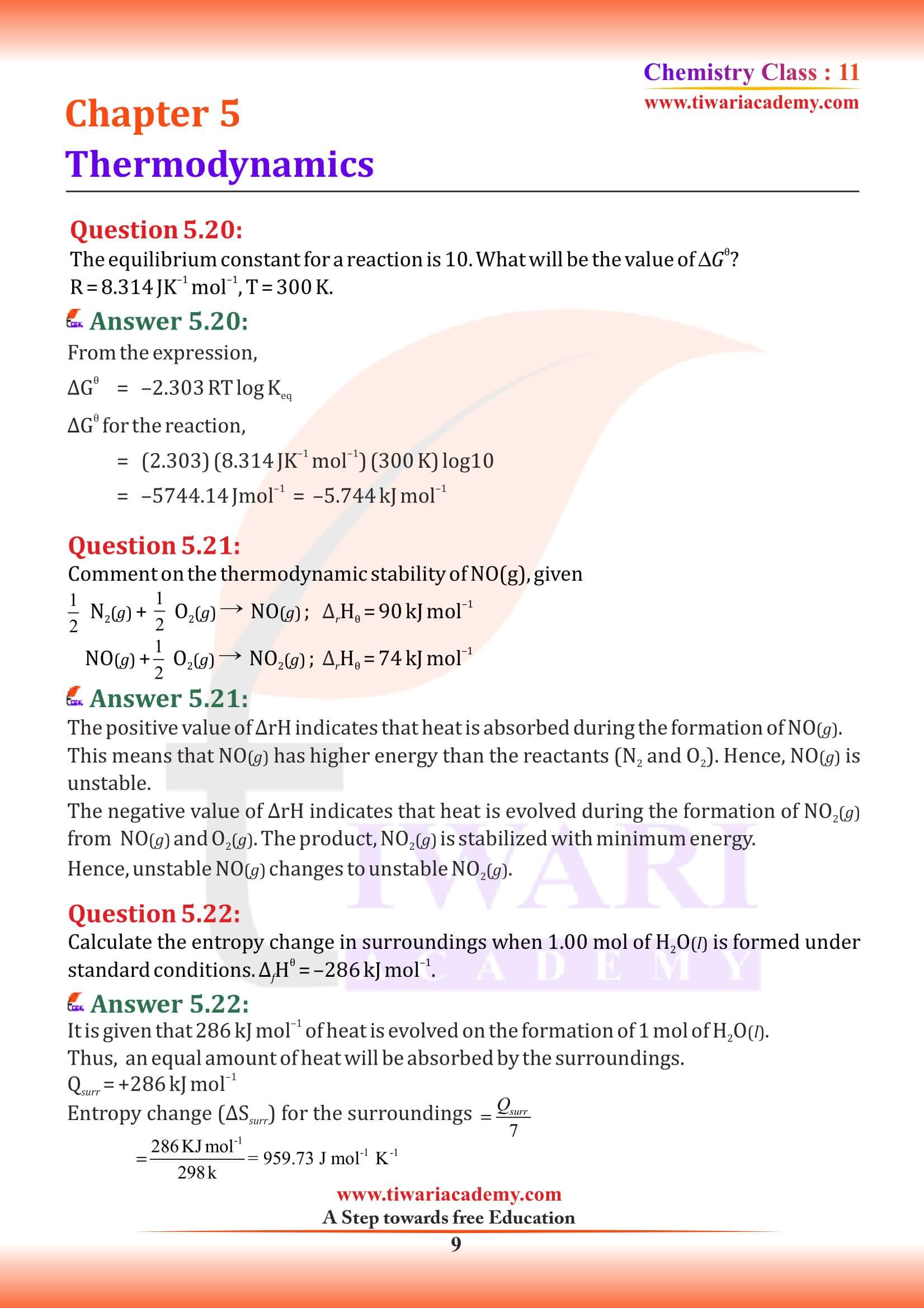NCERT Solutions for Class 11 Chemistry Chapter 5 Thermodynamics in Hindi and English Medium based on new edition NCERT Books for session 2025-26. Get here Class 11 Chemistry Chapter 5 MCQ, extra questions, exercises and intext question-answers.
NCERT Solutions for Class 11 Chemistry Chapter 5
- Class 11 Chemistry Chapter 5 NCERT Solutions
- Class 11 Chemistry Chapter 5 NCERT Book
- Class 11 Chemistry Chapter 5 Hindi Medium
- Class 11 Chemistry Chapter 5 Revision Book
- Class 11 Chemistry Chapter 5 Study Material 1
- Class 11 Chemistry Chapter 5 Study Material 2
- Class 11 Chemistry Chapter 5 Study Material 3
- Class 11 Chemistry Chapter 5 Assignment
- Class 11 Chemistry NCERT Solutions
- Class 11 all Subjects NCERT Solutions
Thermodynamics
Thermodynamics is the study of the relations between heat, work, temperature, and energy. The laws of thermodynamics describe how the energy in a system changes and whether the system can perform useful work on its surroundings.
Class 11 Chemistry Chapter 5 MCQ
Thermodynamics is not concerned about
Which of the following statements is correct?
The state of a gas can be described by quoting the relationship between
The volume of gas is reduced to half from its original volume. The specific heat will be
The System and the Surroundings
A system in thermodynamics refers to that part of universe in which observations are made and remaining universe constitutes the surroundings. The surroundings include everything other than the system. System and the surroundings together constitute the universe.
The universe = The system + The surroundings
Types of the System
There are mainly three type of systems are existing in the universe:
- 1. Open system
- 2. Closed system
- 3. Isolated system
Class 11 Chemistry Chapter 5 Multiple Choice Questions
The enthalpies of elements in their standard states are taken as zero. The enthalpy of formation of a compound
Enthalpy of sublimation of a substance is equal to
Which of the following is not correct?
The spontaneity means, having the potential to proceed without the assistance of external agency. The processes which occur spontaneously are
Class 11 Chemistry Chapter 5 Extra Important Questions
The molar enthalpy of vaporization of acetone is less than that of water. Why?
Because of strong hydrogen bonding in water, its enthalpy of vaporization is more = –178.3 kJ mol⁻¹
Given that ∆H= 0 for mixing of two gases. Explain whether the diffusion of these gases into each other in a closed container is a spontaneous process or not?
It is spontaneous process. Although enthalpy change is zero but randomness or disorder (i.e., ∆S) increases. Therefore, in equation
∆G = ∆H – T∆S, the term T∆S will be negative. Hence, ∆G will be negative.
Predict the change in internal energy for an isolated system at constant volume.
For isolated system, there is no transfer of energy as heat or as work. i.e.,
w = 0 and q = 0.
According to the first law of thermodynamics.
∆U = q + w
= 0 + 0 = 0
∴ ∆U = 0
Open System
In an open system, there is exchange of energy and matter between system and surroundings. The presence of reactants in an open beaker is an example of an open system. Here the boundary is an imaginary surface enclosing the beaker and reactants.
Closed system
The system that allows only the transfer of energy in or out of the system but does not allow the transfer of matter is known to be a closed system. For example, a beaker of evaporating water with a closed lid on it allows the transfer of energy to the surroundings but does not allow (matter) water to leave.
Isolated system
An isolated system is a thermodynamic system that cannot exchange either energy or matter outside the boundaries of the system. There are two ways in which this may occur: The system may be so distant from another system that it cannot interact with them.
Work in thermodynamics
In thermodynamics, thermodynamic work is the quantity of energy transferred from one system to another. It is a generalization of the concept of mechanical work in mechanics. In the SI system of measurement, work is measured in joules (symbol: J). The rate at which work is performed is power.
Reversible and Irreversible Processes
A process or change is said to be reversible, if a change is brought out in such a way that the process could, at any moment, be reversed by an infinitesimal change. A reversible process proceeds infinitely slowly by a series of equilibrium states such that system and the surroundings are always in near equilibrium with each other. Processes other than reversible processes are known as irreversible processes.
